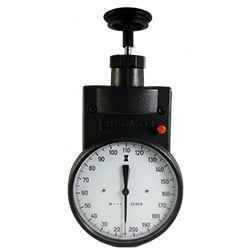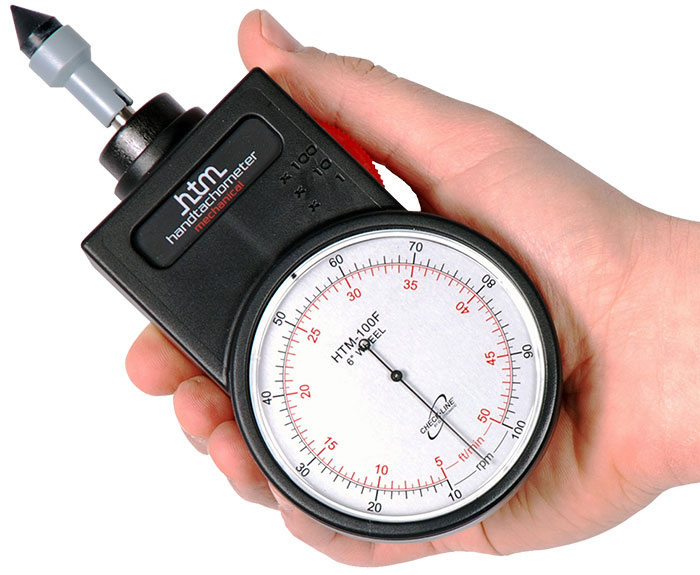Enhance Your Driving Experience with a Reputable Tachometer
Enhance Your Driving Experience with a Reputable Tachometer
Blog Article
The Relevance of a Tachometer in Keeping Track Of Engine Speed and Performance in Automotive Applications
In the realm of auto engineering, the tachometer stands as a critical tool in the chauffeur's toolbox, providing a direct home window into the internal workings of a lorry's engine. Beyond its feature as a plain gauge of changes per min (RPM), the tachometer serves as an important device for lovers and experts alike, providing real-time insights into engine performance and health and wellness.
Importance of Checking Engine RPM
Monitoring engine RPM, or changes per min, is an important aspect of auto maintenance and performance evaluation. Engine RPM directly associates with the speed at which the engine's crankshaft turns, showing just how quickly the engine is running - tachometer. By monitoring RPM, mechanics can analyze the health and wellness of the engine, spot potential concerns, and fine-tune efficiency. An abnormal RPM analysis might signify issues such as engine misfires, damaged ignition system, or problems with the fuel shipment system. Constantly high RPM readings could indicate hostile driving habits or the requirement for a higher equipment shift to boost fuel performance.
In addition, keeping track of engine RPM is essential for efficiency assessment in racing and high-performance cars. Keeping optimal RPM degrees is critical for achieving peak power outcome and velocity. Racers typically utilize tachometers to ensure they are operating within the optimal RPM array for optimum efficiency. In recap, monitoring engine RPM is not only vital for discovering concerns yet additionally for maximizing engine performance in different automotive applications.

Advantages of Real-Time Data
In automobile applications, real-time information plays an essential function in supplying instantaneous understandings into the performance and condition of the car. By continuously keeping an eye on different criteria such as engine speed, temperature, gas consumption, and a lot more, real-time data supplies various advantages that add to improved effectiveness and security on the road.
One considerable advantage of real-time information is its capacity to alert motorists and service technicians to any kind of anomalies or problems without delay. This positive strategy enables quick identification of potential problems, enabling timely interventions to stop more damage or break downs. Additionally, real-time information helps with performance optimization by giving immediate responses on driving routines and engine effectiveness. Drivers can adjust their habits in real-time based on this details to accomplish far better gas economic situation and extend the life-span of their lorry.

Furthermore, real-time data plays an important duty in modern automotive diagnostics, enabling specialists to quickly detect and attend to breakdowns. This results in minimized downtime, lower upkeep expenses, and inevitably, boosted total automobile integrity and longevity (tachometer). By taking advantage of the power of real-time data, automobile stakeholders can make educated choices that positively affect both the efficiency and long life of the vehicle
Effect On Equipment Shifts
Effective equipment shifts in automobile applications dramatically affect overall performance and driving experience. The tachometer plays an important duty in optimizing gear shifts by offering real-time engine speed data to the motorist. When coming close to the redline on the tachometer, it indicates the vehicle driver to upshift to prevent over-revving the engine and causing potential damage. On the other hand, downshifting at the best moment can help maintain the engine in its power band, ensuring responsive acceleration when needed.
Moreover, the tachometer help in attaining smoother equipment shifts, especially in hands-on transmissions. By keeping track of engine speed, drivers can implement equipment shifts at the ideal RPM range, reducing snagging movements and lessening wear on the transmission components. This accuracy in equipment modifications not only boosts driving comfort but likewise adds to fuel efficiency.
Enhancing Gas Efficiency
Provided the critical role the tachometer plays in maximizing gear shifts for efficiency and engine health, it straight adds to maximizing gas check my reference effectiveness in automotive applications. By supplying real-time feedback on engine speed, the tachometer helps chauffeurs in keeping the most reliable RPM variety for gas economic climate. When vehicle drivers regularly keep track of the tachometer and readjust their driving behaviors appropriately, they can stay clear of unnecessary gas other intake triggered by over-revving or lugging the engine.
Furthermore, the tachometer assists motorists determine the most fuel-efficient equipment to be in at any given moment, avoiding the engine from working more challenging than needed. In final thought, the tachometer offers as a useful tool in improving fuel effectiveness by promoting optimal driving habits and identifying areas for renovation in the car's efficiency.

Making Best Use Of Engine Long Life
The tachometer's duty in checking engine rate and performance is critical in guaranteeing the longevity of auto engines. By using the tachometer effectively, chauffeurs can maximize engine durability via mindful RPM management. Regularly revving an engine too expensive can lead to too much deterioration on vital elements, such as the pistons, valves, and bearings. With time, this can lead to decreased engine performance and possible malfunctions. Keeping an eye on the tachometer enables chauffeurs to stay within the advised RPM range for their automobile, protecting against unneeded strain on the engine and extending its life-span.

Verdict
In final thought, the tachometer plays an essential duty in keeping track of engine rate and performance in auto applications. By supplying real-time information on RPM, it permits effective equipment shifts, improved gas effectiveness, and made the most of engine long life. This tool is necessary for maintaining optimum engine efficiency and you can find out more making sure the overall performance of a lorry.
Report this page